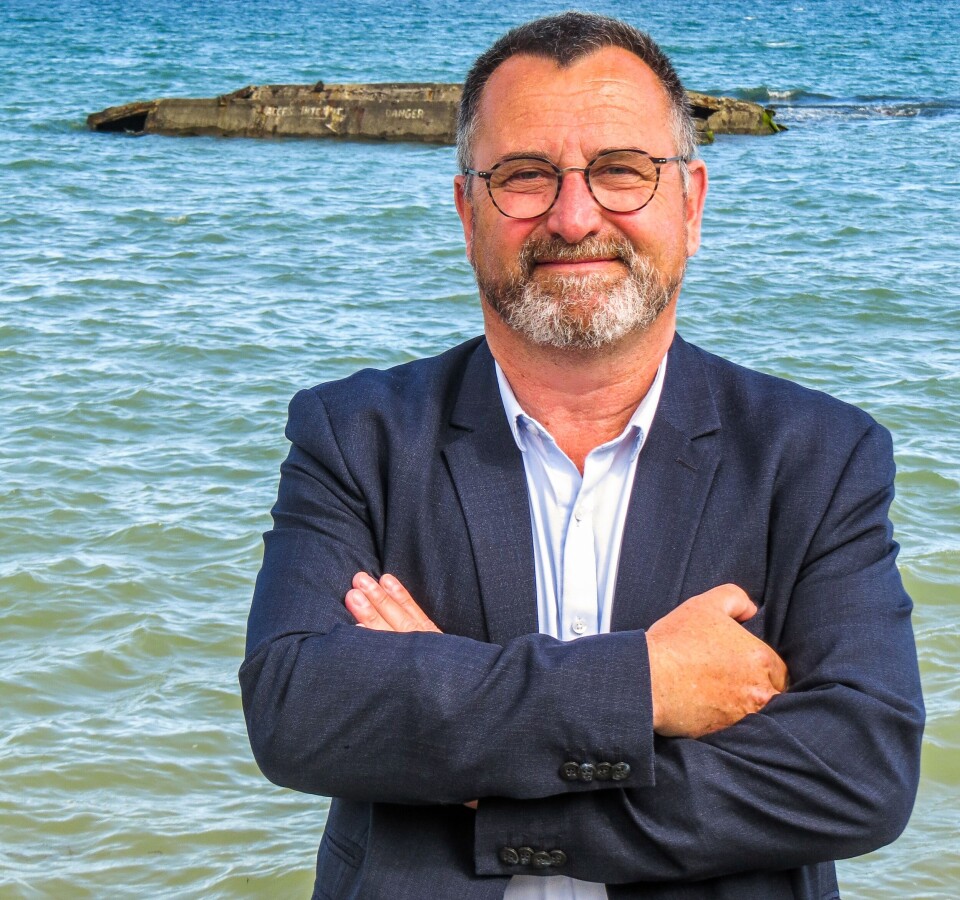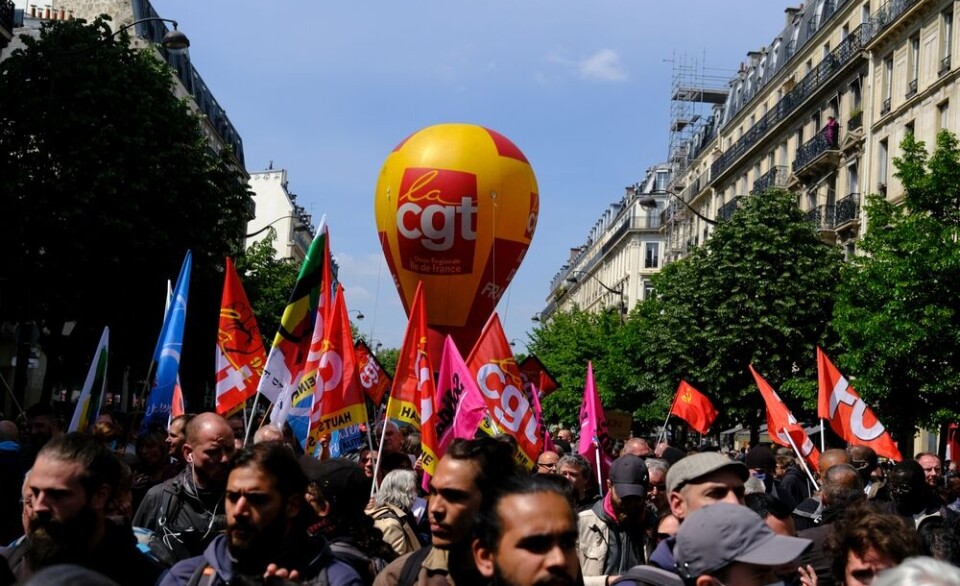-
Charging non-Europeans more to visit Louvre is discrimination, says major French union
Admission fees set to rise elsewhere in four more of France’s key cultural sites
-
Discover Verdun's Memorial Museum and Douaumont Ossuary
Why the museum is the best place to begin your exploration of the battlefields
-
Centre Pompidou renovation: get to know this 'inside out' Paris site
Centre Pompidou is one of France’s most recognisable public buildings, but it will be temporarily closed to the public from September
Meet Frédéric Sommier, director of Normandy's D-Day museum
The Connexion spoke to the former military man about the museum’s newest improvement, but also about his role in maintaining the memory of WW2

As the number of survivors from WW2 dwindles, Frédéric Sommier, talks to Théophile Larcher about how to keep the memories alive, lest we forget.
Mr Sommier has been the director of the musée du Débarquement, the D-Day museum, since 2007. The museum is dedicated to the events of D-Day and to the artificial port of Arromanches (Calvados), which was built by the British.
For 15 years he has paced the aisles of a museum nearly as old as the events to which it pays tribute. He is the last person to have seen it in its former state before renovation work began in November 2022. The museum reopened on April 1, and on June 6 President Macron inaugurated the revamped version.
“My role is to be the manager of remembrance,” he told the daily newspaper Ouest-France in 2015.
Read more: Descendants of Frenchmen forced to fight for Germany seek recognition
What has the reaction from the first visitors been since the reopening?
Very favourable, both on site and on social media platforms. There seems to be a minor concern with the architecture not appealing to some people, but regarding the exhibition, visitors seem to be satisfied.
What are the main improvements?
We improved everything. The museum was initially built in 1953. And while we refreshed the displays in 2003, 20 years had gone by without any significant refurbishment, so it was time to make improvements.
The museum was designed to welcome a maximum of 35,000 visitors per year, and we were seeing ten times that number. This affected visitor comfort. Improvements were undertaken with that in mind. We focused on allowing for the same quality of exhibitions but with better conditions for the visitor.
We refined everything relating to Arromanches’ port and our core exhibition. We also included many more stories from the town itself during the Occupation period.
You use technology to create a more immersive visitor experience. Does this help to recreate the conditions of D-Day more vividly?
D-Day is not our main activity. It is the port. But the museum has a D-Day section since it is intrinsically linked to the port.
We have a two-minute film for each of the beaches (Juno, Omaha, Sword, Utah, and Gold) that recreates what happened. These films are one of our key improvements, as previous exhibitions only displayed static exhibits, such as uniforms and weapons.
Before the reconstruction, the museum’s exhibitions were much smaller, and centred around our collections.
The museum was offered a gun owned by Lt Cdr Philippe Kieffer, who led the French army’s landing on Sword beach. Are there other objects that you dream of exhibiting?
That I dream of? No. Because we do not dream of acquiring specific objects. The museum’s members never dreamed of having Kieffer’s gun, for example, because no one knew it still existed.
Might you be looking for particular objects owned by Americans, British, or Canadians that are hidden away in a cabinet somewhere in various houses in the United States?
No. I can’t think of any such object. Our collection is almost complete, but we regularly received offers until around four or five years ago. Offers reduced slightly over the years because there are two categories of owners: the first donates objects to exhibitions, but the second sells them, being aware of their high market value. The second type is now the most common, without a doubt.
Read more: Teacher uncovers wartime heroism to save Jews in France
How do you keep the memory of one of the twentieth century’s most important events alive?
Everything rests on the shoulders of those who are still alive and survived the events. But of course, more die every year. Maybe two or three of them will survive the eightieth anniversary of D-Day in 2024. This should be an issue up for collective discussion and debate.
Should, for example, events replace the work of commemoration? L’Hommage aux héros, a performance-exhibition project due to open in 2024 in the Manche and Calvados regions, could be part of the answer.
Apart from this, the onus will be on the descendants, and how much importance they attribute to the task. It is maybe our role to look for these descendants.
Has the war in Ukraine helped to reinforce the role your museum plays?
I hope so. But I am afraid it might go the opposite way. We have witnessed 70 years of people debating the consequences of WW2 and why it should never happen again. It is now happening in Europe again. I am afraid the message has weakened over time.
I imagine, for example, a family taking their children to our museum to warn them about the consequences of war, only for the kids to say: “Hey Mum, hey Dad, this is happening in Ukraine.”
Do you feel hopeless? Do you ask yourself if the museum should change its tone or content? Or is this not down to you?
I do not feel it is the responsibility of the museum in particular. It is the work of the Ministry of Education, first and foremost. We are a part of a global process. The museum should not have to change anything. I am just hoping that what is happening in Ukraine is a brief episode in contemporary history.
Several historians, such as Stephen A. Bourque and Giles Milton, have commented on the ‘absent storytelling’ of events surrounding D-Day, mainly the trauma that civilians living in bombarded towns experienced. What is your position on that topic?
Arromanches was not affected by what you are talking about. But that aspect of the war is shown at Mémorial de Falaise’s museum, with an immersive room that shakes to help visitors understand what bombardment was like. That experience has not been forgotten.
We are lucky to have a frontline of museums around the region, each dealing with elements of the war’s history. They are not competitors but rather work as complementary sources.
Do you wish that the D-Day beaches would be included on Unesco’s National Heritage list?
The stakes are high for everybody. The economic argument that it helps to attract 30% more visitors is understandable for modest sites, but ours already welcomes many tourists. This is not what a Unesco listing is about for us. Instead it would represent recognition of the investment and efforts many have given in order to keep that memory alive. And it would turn these beaches into sanctuaries.
What do you mean? They are already in the collective psyche of almost every French person and many British and Americans.
Yes, but I am afraid they could slowly be forgotten if they do not receive a Unesco heritage listing.
You told Ouest-France in 2015 that renovating the museum would be the “last challenge of [your] life.” What are you going to do now?
(Laughs) Wait a second, it is not over yet. The museum is divided into two parts. We have just finished the first section, the exhibition space. Behind the museum will be an oceanographic exhibition space, administration offices, and a garden. It will host temporary and free exhibitions. This will be completed by the end of 2023 or early 2024. Then there will be the eightieth anniversary of D-Day.
Such a museum needs four to five years before it operates properly. Let’s talk about it in four years, shall we?
Since this interview, Calvados MP Christophe Blanchet has asked President Macron to make the 80th anniversary of D-Day on June 6, 2024, a one-off national holiday.
Related links
Dozens of executed WW2 German soldiers possibly found in France
Unveiling the history of rugby in La Rochelle
Make the 80th anniversary of D-Day a national holiday, urges French MP
























